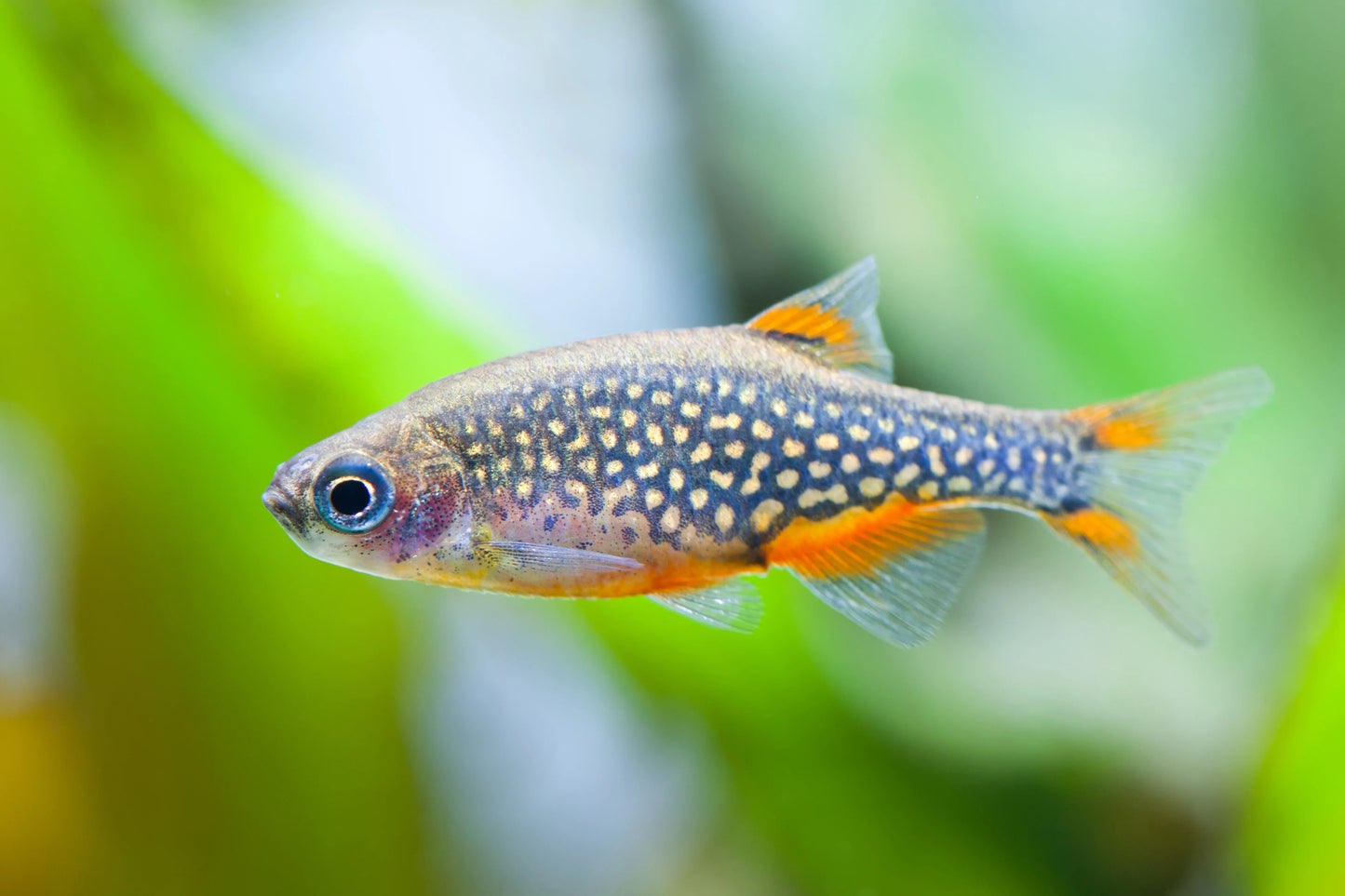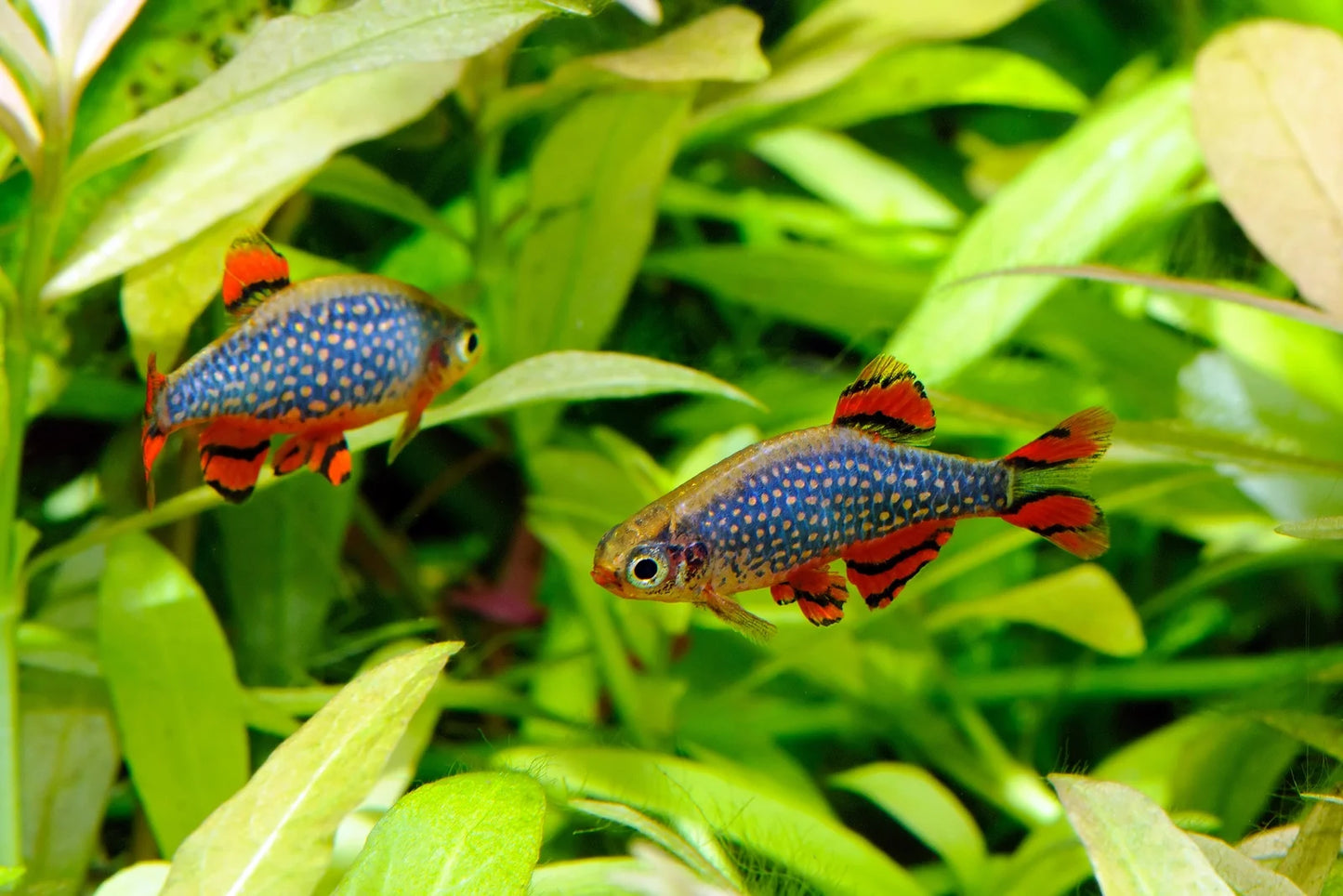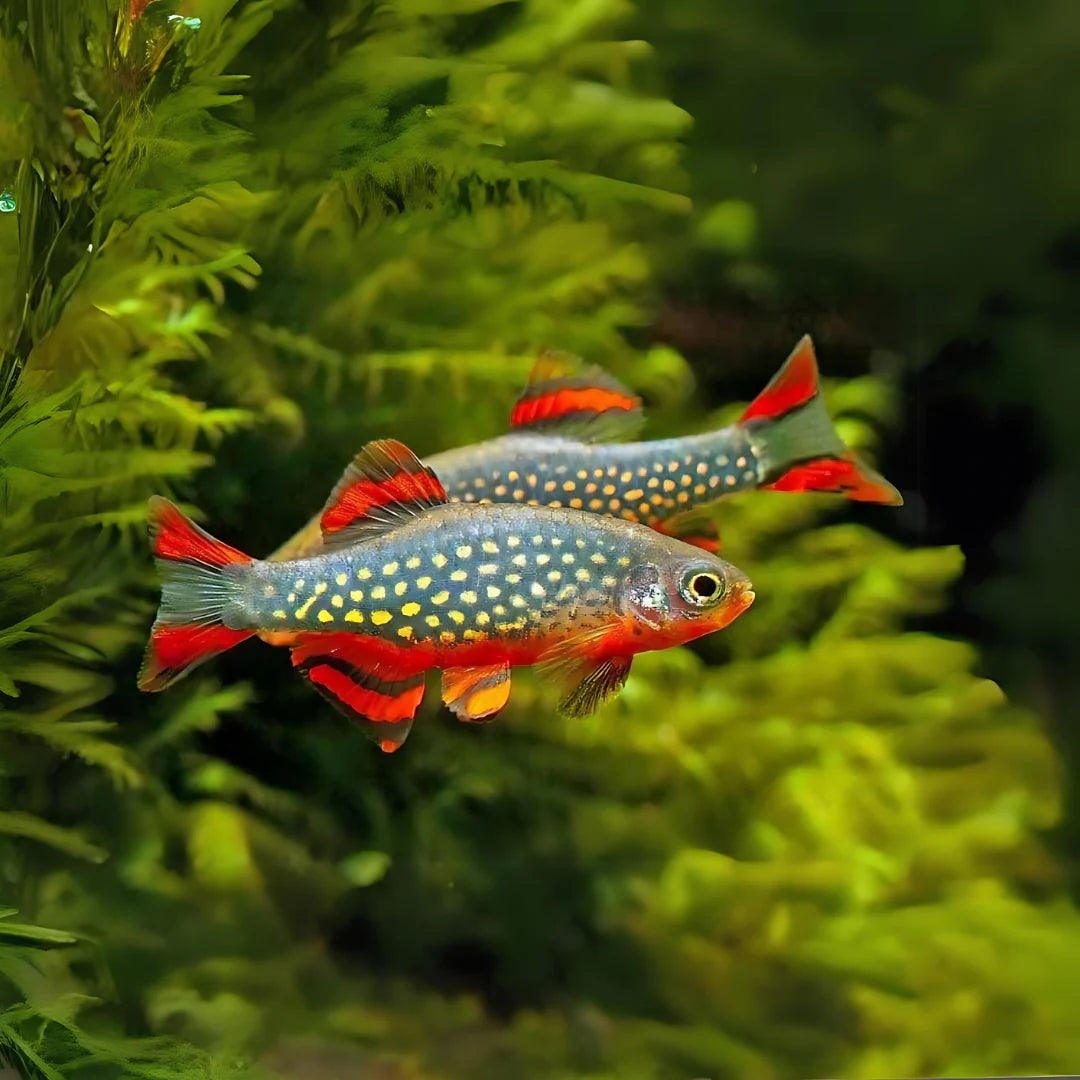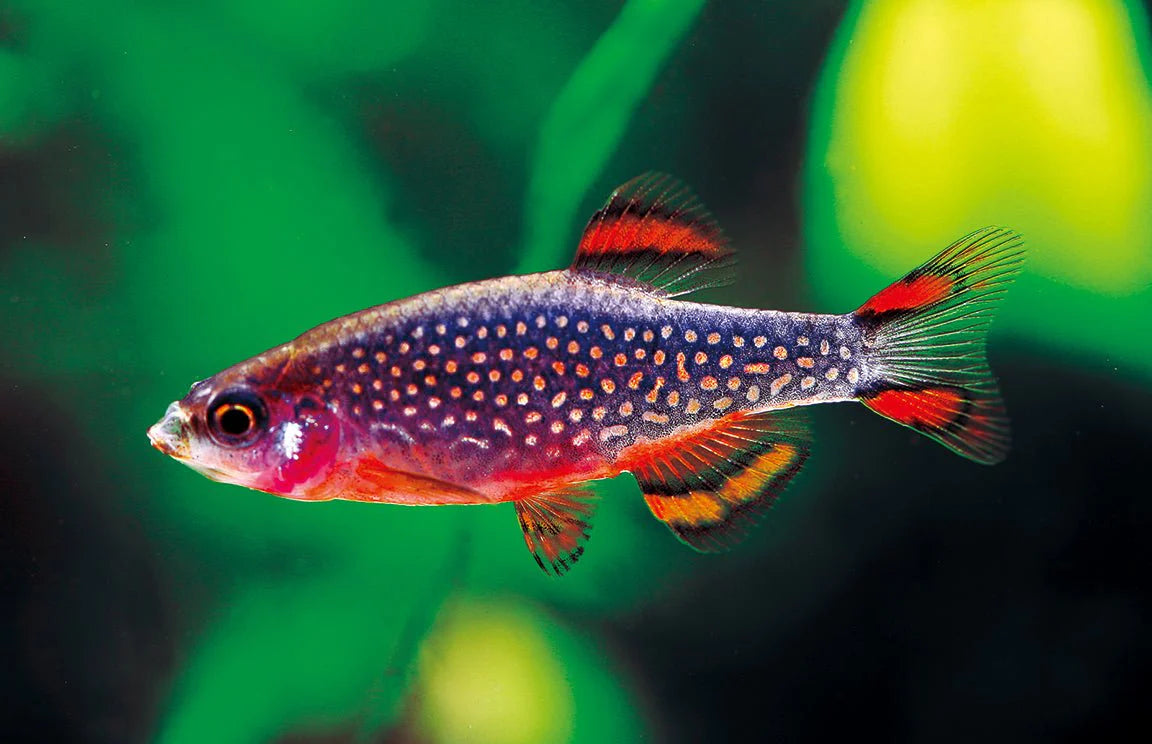Galaxy Rasbora (Danio margaritatus) - Live Fish
Galaxy Rasbora (Danio margaritatus) - Live Fish
Total items
Product subtotal
Detailed Description
Detailed Description
The Galaxy Rasbora (Danio margaritatus), also known as the Celestial Pearl Danio, is a small and highly sought-after species of freshwater fish known for its striking appearance and peaceful nature. It is a member of the Danio genus and is often favored by aquarists for its vibrant colors and small size.
Key Features of the Galaxy Rasbora:
-
Appearance:
- The Galaxy Rasbora is named for its beautiful, iridescent body that is dotted with tiny, bright blue spots, resembling a galaxy or starry sky.
- Its base color is typically a translucent, pale blue or greenish hue.
- The fish has a small, slender body with a slightly rounded shape, and it exhibits a contrasting mix of colors, with bright orange or yellow-orange on the fins and tail.
- The eye is also often highlighted by a characteristic metallic sheen, contributing to its overall "celestial" look.
-
Size:
- The Galaxy Rasbora is a very small fish, growing to a maximum length of around 1 inch (2.5 cm).
- Due to its small size, it is well-suited for nano aquariums or smaller community tanks.
-
Temperament:
- These fish are peaceful, active, and social creatures.
- They thrive in schools of at least 6-8 individuals, as they feel safer and more secure in groups.
- The Galaxy Rasbora is not aggressive and does well with other small, non-aggressive species in a community tank.
-
Habitat and Water Conditions:
- Origin: Native to Myanmar (Burma), particularly found in small, slow-moving streams and rivers, where they live in densely vegetated areas.
-
Water Parameters:
- pH: Slightly acidic to neutral (6.0–7.5).
- Temperature: Prefers a tropical temperature range of 72–78°F (22–26°C).
- Hardness: Soft to moderately hard water is ideal.
- The Galaxy Rasbora thrives in well-planted tanks with gentle water flow and plenty of hiding spots.
-
Diet:
- Galaxy Rasboras are omnivores, enjoying a varied diet that includes:
- High-quality flakes or pellets.
- Live or frozen foods such as brine shrimp, daphnia, and bloodworms.
- They are not particularly picky eaters but should be given a balanced diet to keep them healthy and vibrant.
- Galaxy Rasboras are omnivores, enjoying a varied diet that includes:
-
Tank Requirements:
- They do best in a well-planted aquarium with a lot of vegetation and hiding places. Plants like Java moss, Anubias, and other low-light plants are ideal.
- A gentle filtration system is preferred, as these fish do not like strong currents.
- A lid or cover on the aquarium is recommended, as they may occasionally jump out of the water.
Care and Maintenance:
- The Galaxy Rasbora is relatively easy to care for, as long as the water conditions are stable and within the recommended ranges.
- Regular water changes (about 20-30% per week) are important to maintain water quality, as they are sensitive to poor water conditions.
- These fish are sensitive to sudden changes in temperature or water chemistry, so it's important to maintain consistency in the tank environment.
Breeding:
- Breeding Galaxy Rasboras in captivity can be relatively straightforward if the conditions are right.
- It is best to set up a breeding tank with soft water and a temperature of around 75°F (24°C).
- They will scatter their eggs among plants or fine-leaved moss. After spawning, the adults should be removed to prevent them from eating the eggs.
- The eggs hatch in about 24–48 hours, and the fry should be fed infusoria or small planktonic foods until they grow large enough to accept regular foods.
The Galaxy Rasbora is a beautiful, small, and peaceful fish that can make an excellent addition to community aquariums, especially those designed for nano or species-specific setups. With its vibrant coloration and calm nature, it is an ideal fish for aquarists who are looking for a low-maintenance, visually stunning species to enhance their aquarium. As long as their basic care needs are met, these tiny fish can live for several years and add a delightful splash of color to your tank.
Product features
Product features
Materials and care
Materials and care
Merchandising tips
Merchandising tips
Share












